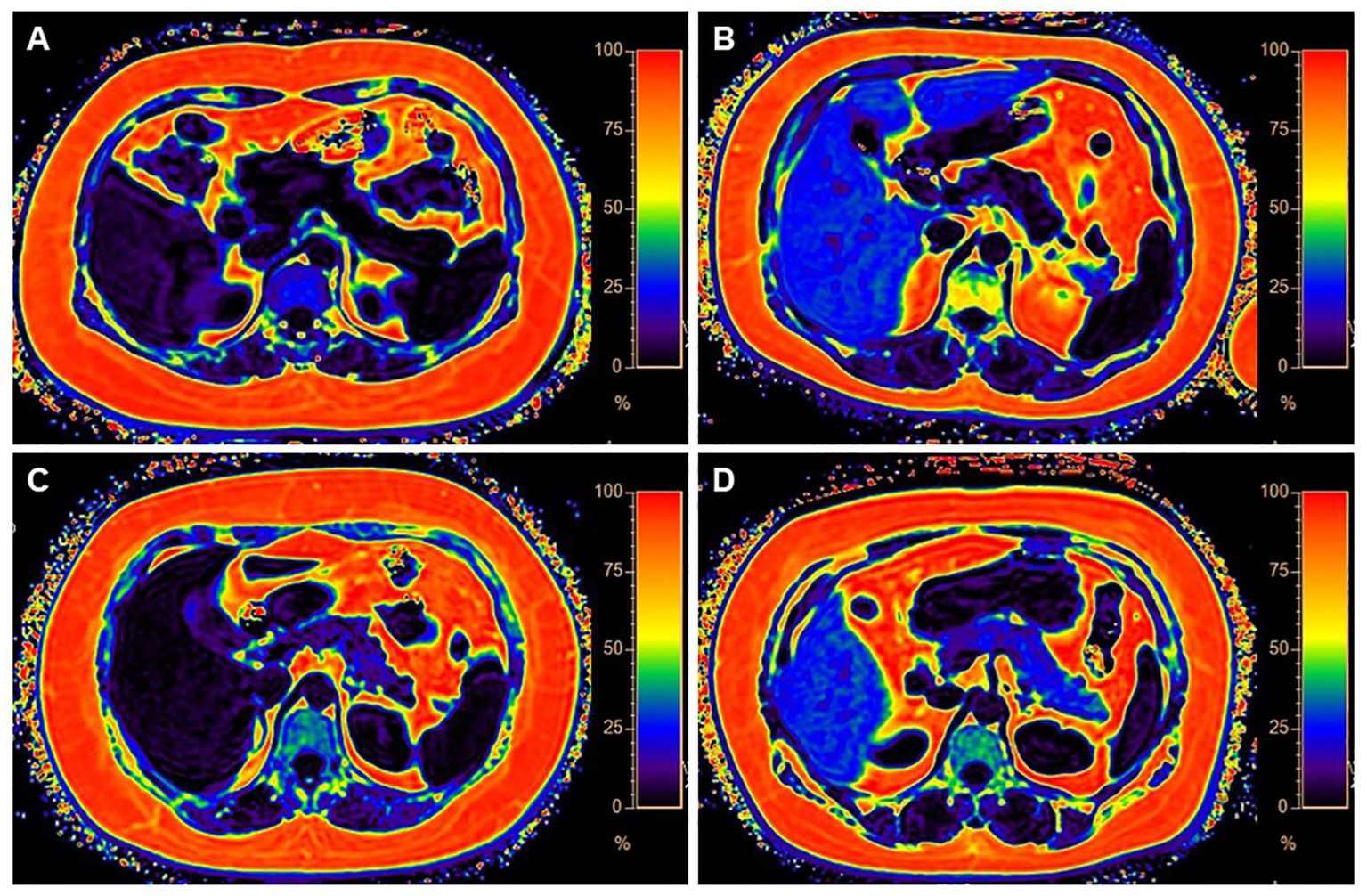- 1Department of Radiology, Zhongnan Hospital of Wuhan University, Wuhan University, Wuhan, China
- 2Hubei Provincial Engineering Research Center of Multimodal Medical Imaging Technology and Clinical Application, Wuhan, China
- 3Wuhan Clinical Research and Development Center of Brain Resuscitation and Functional Imaging, Wuhan, China
- 4Department of Hepatobiliary and Pancreatic Surgery, Zhongnan Hospital of Wuhan University, Wuhan University, Wuhan, China
- 5Department of Endocrinology, Zhongnan Hospital of Wuhan University, Wuhan University, Wuhan, China
- 6Department of Endocrinology and Metabolism, Guangxi Academy of Medical Sciences and the People’s Hospital of Guangxi Zhuang Autonomous Region, Guangxi, Nanning, China
- 7Department of MSC Clinical & Technical Solutions, Philips Healthcare, Beijing, China
- 8Department of Clinical Nutrition, Zhongnan Hospital of Wuhan University, Wuhan University, Wuhan, China
A Corrigendum on
Exploring the heterogeneity of hepatic and pancreatic fat deposition in obesity: implications for metabolic health
By Deng M, Li Z, Chen S, Wang H, Sun L, Tang J, Luo L, Zhang X, Xu H and Dai Z (2024). Front. Endocrinol. 15:1447750. doi: 10.3389/fendo.2024.1447750
In the published article, there was an error in the legend for Figure 1 as published. In the original article, there was a misplacement of data in the text description for Figure 1 as published. The corrected caption and its figure appear below.

Figure 1. Four categories of MR images illustrate different levels of fat deposition in obesity. (A) Represents the first category, showing no fat deposition in either the liver or pancreas. The average fat fraction (FF) of the liver and pancreas were 4.37% and 1%, respectively. (B) Represents the second category, with high-fat deposition in the liver and minimal fat deposition in the pancreas. The average FF of the liver and pancreas were 28% and 4%, respectively. (C) Illustrates the third category, with less fat deposition in the liver but higher fat deposition in the pancreas. The average FF of the liver and pancreas were 3% and 13.1%, respectively. (D) Demonstrates the fourth category, characterized by fatty deposits in both the liver and pancreas. The average FF of the liver and pancreas were 31% and 22.6%, respectively.
The authors apologize for this error and state that this does not change the scientific conclusions of the article in any way. The original article has been updated.
Publisher’s note
All claims expressed in this article are solely those of the authors and do not necessarily represent those of their affiliated organizations, or those of the publisher, the editors and the reviewers. Any product that may be evaluated in this article, or claim that may be made by its manufacturer, is not guaranteed or endorsed by the publisher.
Keywords: obesity, non-alcoholic fatty liver disease, non-alcoholic fatty pancreas disease, insulin resistance, fat deposition heterogeneity
Citation: Deng M, Li Z, Chen S, Wang H, Sun L, Tang J, Luo L, Zhang X, Xu H and Dai Z (2024) Corrigendum: Exploring the heterogeneity of hepatic and pancreatic fat deposition in obesity: implications for metabolic health. Front. Endocrinol. 15:1514364. doi: 10.3389/fendo.2024.1514364
Received: 20 October 2024; Accepted: 29 October 2024;
Published: 20 November 2024.
Edited and Reviewed by:
Jialiu Zeng, Syracuse University, Syracuse, United StatesCopyright © 2024 Deng, Li, Chen, Wang, Sun, Tang, Luo, Zhang, Xu and Dai. This is an open-access article distributed under the terms of the Creative Commons Attribution License (CC BY). The use, distribution or reproduction in other forums is permitted, provided the original author(s) and the copyright owner(s) are credited and that the original publication in this journal is cited, in accordance with accepted academic practice. No use, distribution or reproduction is permitted which does not comply with these terms.
*Correspondence: Haibo Xu, eHVoYWlib0B3aHUuZWR1LmNu; Zhe Dai, ZGFpemhlQHpuaG9zcGl0YWwuY24=
†These authors have contributed equally to this work
 Ming Deng
Ming Deng Zhen Li4†
Zhen Li4† Shangyu Chen
Shangyu Chen Jun Tang
Jun Tang Haibo Xu
Haibo Xu Zhe Dai
Zhe Dai